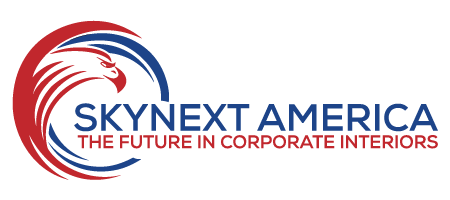Sound Masking systems create a more comfortable and productive environment by protecting sensitive information, reducing distractions, and promoting speech privacy. All of this allows people to focus more on their own interactions and work by making other people’s conversations and other distracting noises nearby less noticeable. It sounds great that sound masking can offer so many benefits for open offices and other workplaces, but how does sound masking work?
How Does Sound Masking Work?
Sound masking is basically an ambient background noise that has been engineered to match the same frequency as human speech in order to provide more speech privacy. While it may seem counter-intuitive, a sound masking machine adds sound to an open area to make the space seem quieter. This is due to the added noise being designed to reduce how intelligible human speech is within the space.
When people aren’t able to understand what others around them are saying, their conversations are less distracting. In fact, other people’s words may not be noticed at all. Sound masking speakers raise the space’s ambient noise level to make other noises less noticeable. The added ambient sound is similar to the sound airflow, making it unlikely that anyone will truly notice the sound. Rather than eliminating all speech noise or cancelling sound within an environment, sound masking reduces how far away other people’s conversation can be heard and understood.
Fighting Sound With Sound
Sound masking can be both helpful and detrimental. In certain situations, such as when sound masking can be unwanted in a space where speech intelligibility is critical, other noise control techniques can be used to reduce the masking sound. Other times, however, fighting sound with more sound can be an effective solution when it comes to acoustical design. This is particularly true for settings where confidentiality is crucial. Private offices, counseling, human resources, and healthcare are all places where low background noise can cause problems and result in less than ideal speech privacy.
Indirect Sound Masking vs Direct Field Sound Masking
There are two different types of sound masking: direct field and indirect. Direct field sound masking has the speaker mounted in the ceiling and pointed downwards towards the listener, similar to a traditional speaker system. With indirect sound masking, sound masking speakers are mounted above the ceiling inside of the plenum space and pointed upwards. The sound added by the sound masking system is reflected back down over the space below. Both direct field and indirect sound masking can be effective in a variety of applications.
Advances in Sound Masking Technology
In theory, just about anything that makes noise could be used to mask other sounds. A sound masking system features the advantage of providing a sound level that can be adjusted and a spectrum of sound that is able to be tailored to the workspace’s environment. Sound masking speakers can ideally be adjusted to be quiet enough for the sound not to be noticed, but loud enough to provide speech privacy. However, the volume sound masking can change throughout the day depending on the level of ambient noise in the space.
Some sound masking systems use timers to adjust the sound level based on the anticipated level of ambient sound at different times during the day. Recent advancements in technology used in sound masking include the ability to measure ambient sound levels in real time, as well as automatically adjusting the volume to adapt to the current needs. This adaptive technique helps the sound masking system maintain speech privacy and increase acoustical comfort in the space over an array of different background sound levels.
Why is Sound Masking Used?
Sound masking systems help ensure sensitive information isn’t overheard and improves overall worker productivity and comfort by eliminating distractions surrounding them. Sound masking helps protect individual privacy and meets the legal standards and required HIPAA compliance where workers may discuss private customer information, such as healthcare or financial records.
Sound masking has become even more important in recent years with the transition to more open layouts, such as call center-style workspaces, cubicles, and open offices that put a lot of people in a tight space. With these types of office setups, it can be difficult for employees to focus on their work when they can easily hear what they’re coworkers are saying or doing. This is where sound masking offers an effective and efficient solution to noise problems.
Where is Sound Masking Being Used?
Sound masking can be used in various applications to provide a more pleasant and comfortable atmosphere, as well as to offer more speech privacy and protect sensitive information. Offices, financial organizations and banks, hospitals, educational institutions, military and government agencies, churches, pharmacies, libraries, spas, and hotel lobbies can all benefit from sound masking. Basically, anywhere that needs fewer distractions and more speech privacy could use a sound masking machine.
Do you need sound masking?
Need help finding the best sound masking solution for your workplace? Contact us today and we will be happy to help you address your sound masking needs.

